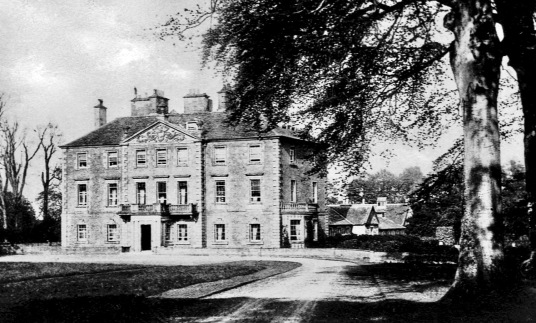Gilmerton House
Lothians: About 3.5 miles east and north of Haddington, on minor roads east of B1347 or north of A1, at Gilmerton House.
Private NT 549778 OS: 66 EH39 5LQ
OPEN: Accommodation available. Weddings and events.
Tel: 01620 880207 Web: www.gilmertonhouse.com
Site of tower or old house. Standing in a 1,000-acre estate, the present impressive classical mansion of three storeys, with an elaborately carved triangular pediment over the entrance, dates from the middle of the 18th century, and was extended in 1828 by the architect William Burn. The house may incorporate even older work.
There was a fine old beehive doocot built of brick [NT 547777], but this was damaged in a storm in the 1950s and has been demolished.
‘Gilmertoun’ is marked on Blaeu’s map of The Lothians (1630), then ‘Gilmortoun’ on Adair’s map of East Lothian (1682), where the building is shown by a formal garden. ‘Gilmorton’ is depicted as a house in wide wooded policies with a walled garden on Forrest’s map of 1799. The OSNB (c.1850s) notes, ‘A large country mansion … built in the modern style of architecture, and situated nearly in the centre of tastefully laid out ornamental and pleasure grounds. A short distance from the mansion house are suitable offices and a vegetable and ornamental or flower garden.’
The lands were held by the Hepburns, but were sold to Francis Kinloch, merchant in Edinburgh, in 1655, along with Athelstaneford and Markle. Kinloch was Lord Provost of Edinburgh, and was made a baronet of Nova Scotia in 1686. Sir Francis Kinloch, 6th baronet, was tragically murdered by Archibald, his own brother, in 1795, just a few days after his father had died. Archibald was tried for the murder, but was given over to the care of his own family because of his insanity at the time of the crime. Sir David Alexander Kinloch CB MVO, 11th baronet, was a brigadier general in the British army and served in the Boer War and World War I. He died in 1944 at Gilmerton. The house is still owned by the Kinlochs.
The family improved the village of Athelstaneford, which remains an attractive place, in the 1780s, building a new church, manse (Fairnielaw House) and school (also see Athelstaneford). The family have a burial enclosure [NT 533773] by the parish church, which incorporates some walls from the original building, believed to date from the 12th century. In a lovely spot with fine views, the present church was altered in 1864, and there are many interesting old carved burial markers dating from 1700 or earlier. The doocot (at the back of the church), which is harled and orange-washed, has been restored as the National Flag Heritage Centre.





















